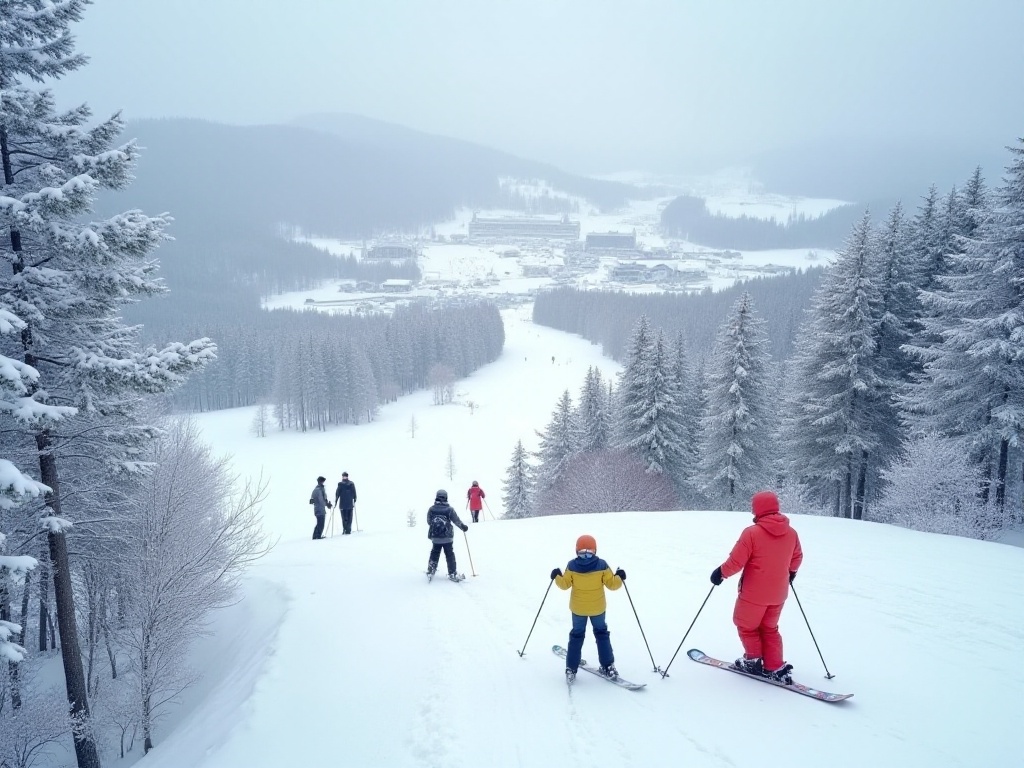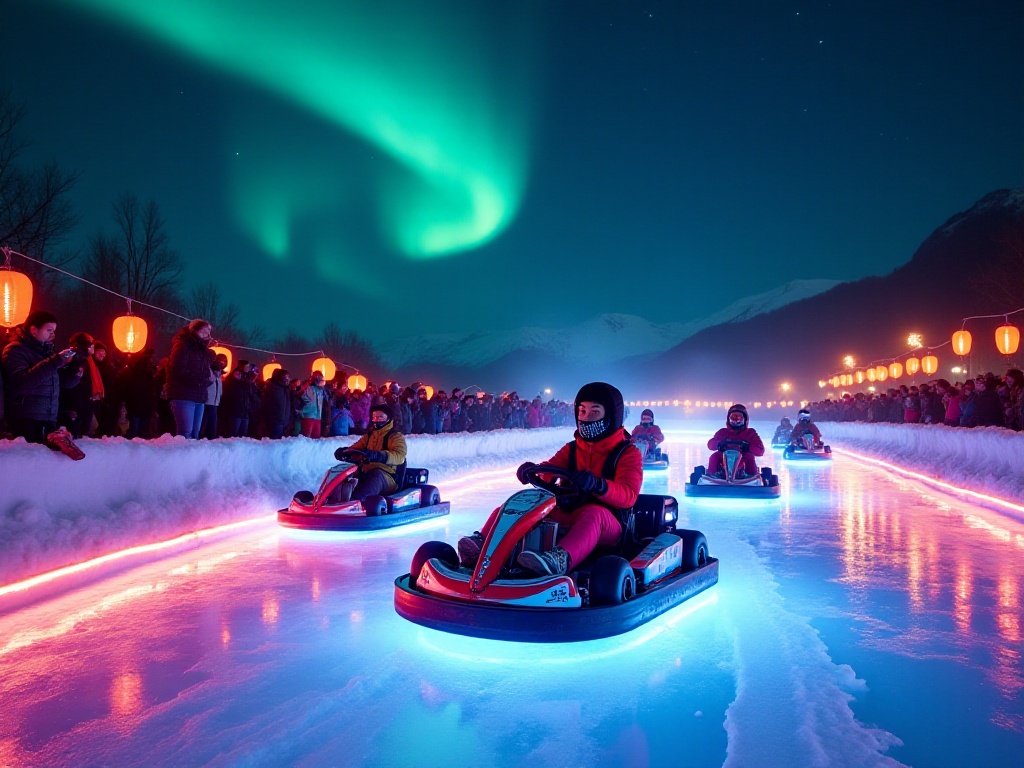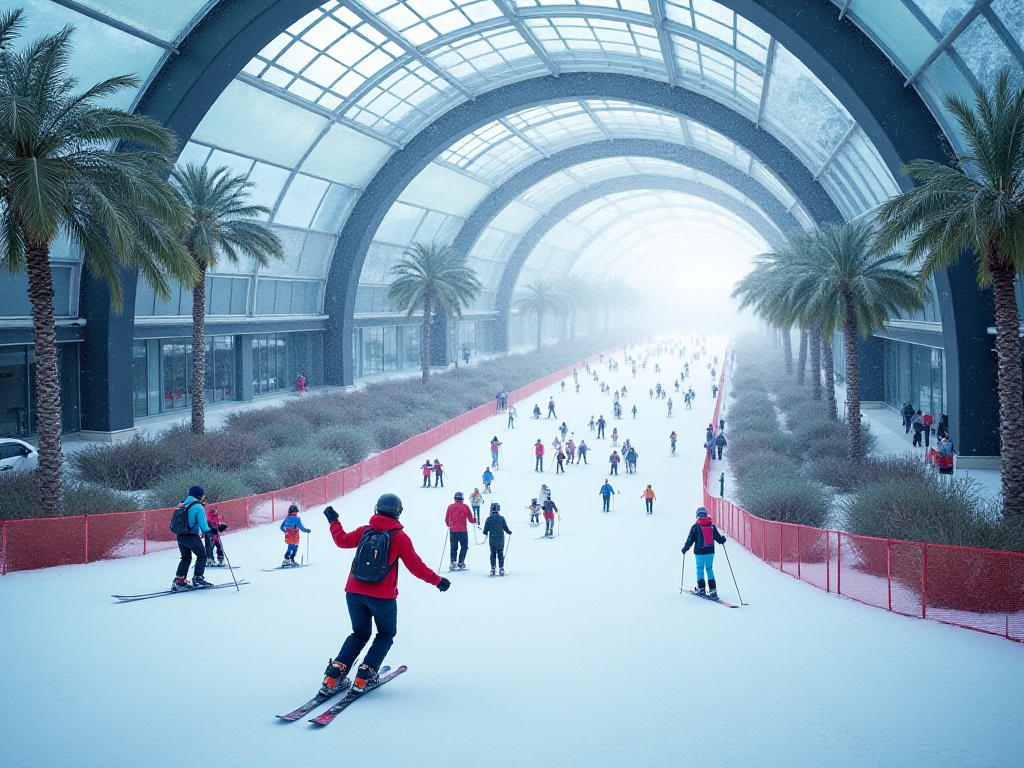Opening Thoughts
Last winter, I met a group of college students from Guangxi at the Harbin Ice and Snow World. Bundled up in thick down jackets and fuzzy hats, their cheeks rosy from the cold, they explored the ice world with boundless enthusiasm. Northeastern locals affectionately called them "little tangerines," which made me chuckle. Watching these southern friends jumping and taking photos in temperatures below -20°C, I realized: ice and snow tourism has truly become a nationwide phenomenon.
That night, I had hotpot with these Guangxi college students. They said it was their first time seeing ice and snow landscapes on such a grand scale, and they were too excited to sleep. One girl mentioned that she had bought three down jackets and two pairs of thermal pants specifically for this trip, worried about the cold affecting her enjoyment. Listening to their laughter, I glimpsed the bright future of ice and snow tourism.
North-South Interaction
A couple of years ago, people were discussing "northerners heading south to escape the cold." During winter, large groups of northern tourists would flock to warm southern cities like Sanya and Xiamen. Now, interestingly, southern tourists have become the main force in ice and snow tourism. According to recent statistics, nearly 80% of ice and snow tourists in the Northeast region are "little tangerines" and "little golden beans" from the south.
This data reminds me of a couple from Shenzhen I met at a ski resort in Changchun a few days ago. It was the girl's first time skiing, and despite being covered in snow from falls, she was having the time of her life. Growing up in Shenzhen, she said she had always dreamed of snow, and this trip finally fulfilled her "ice and snow dream." Her boyfriend, a "skiing enthusiast," had visited Changchun last winter and took a week off this time to experience different ski resorts.
Meanwhile, the northern "cotton-padded jackets" aren't sitting idle, choosing to spend winter in the warm south. A friend from the Northeast just returned from a vacation in Sanya last month. He said Sanya's tourism offerings have become increasingly diverse, from diving and surfing to sailing experiences. This north-south tourism pattern reminds me of sweet and sour pork - a perfect blend of contrasting elements.
This tourism pattern has not only boosted local economies but also promoted cultural exchange between north and south. In Harbin, you can see southern tourists lining up for Modern Ice Cream; in Sanya, northern tourists enjoy fresh coconuts. This cultural collision and fusion have made China's tourism market more vibrant and colorful.

Market Scale
Speaking of scale, this number will surprise you. Ice and snow tourism is expected to exceed 500 million visits this year. Yes, you read that right - 500 million. Considering last year's 3.85 million visits, this growth rate is faster than the temperature drop in the Northeast. Behind this number lies the booming development of the entire ice and snow industry chain.
From accommodation and dining to transportation and shopping, from professional skiing equipment to leisure facilities, ice and snow tourism has formed a complete industrial ecosystem. A ski instructor I know says his income has multiplied several times compared to before. This is not just due to increased tourist numbers, but also growing demand for professional ski training.
Moreover, the consumption level in ice and snow tourism continues to rise. Tourists are no longer satisfied with simple photo opportunities but focus more on the quality and depth of experiences. The day before yesterday, I met a family at Changbai Mountain who had hired a private instructor for family ski lessons. The father said it was a winter vacation gift for his child, hoping to cultivate an interest in winter sports.
This consumption upgrade trend has driven the development of related industries. Professional ski equipment stores, ice and snow themed hotels, and ice and snow experience centers are emerging in major cities. A friend in the sports equipment business told me their ski equipment sales increased by 200% last winter compared to the previous year.

International Perspective
Even more exciting is that friends from Africa are now coming to experience China's ice and snow. Last year in Changchun, I met Oubeid, a student from Mauritania, who returned this year with friends. "We've never seen snow in our country, and ice karting is just too cool," he told me excitedly.
Oubeid's story is just a glimpse of the internationalization of China's ice and snow tourism. Now, more international tourists are attracted to China's ice and snow tourism. At Harbin Ice and Snow World, you can hear laughter in various languages. I once met a Japanese couple on a chairlift who said they chose to vacation in China because the ski resorts are not only advanced but also offer good value for money.
This internationalization trend has also promoted cultural exchange. At a resort in Changbai Mountain, I saw them prepare uniquely Chinese ice and snow experience activities for international tourists, such as ice diabolo and snow calligraphy. These distinctive activities allow international tourists to experience Chinese culture while enjoying winter sports.
Furthermore, China's ice and snow tourism industry is exporting experience and technology to international markets. I know an engineer working on ice and snow equipment whose company now exports indoor ski resort refrigeration equipment to Southeast Asian countries. He says that as winter sports become more popular, many countries without natural snow are building indoor ski resorts.

The Harbin Model
As a benchmark for China's ice and snow tourism, Harbin shows us what "Ice and Snow+" means. The Ice and Snow World alone covers 1 million square meters and uses 300,000 cubic meters of ice and snow in its construction - equivalent to 120 standard swimming pools. Each year, the Ice and Snow World introduces new themes and designs; this year's theme is "Frozen Wonderland," transforming the entire park into a fairy tale world.
I remember being amazed on my first visit to the Ice and Snow World. After nightfall, the entire park is illuminated with colorful lights, and the massive ice castle sculptures shine brilliantly. The 46-meter-high main tower, built with over 3,000 ice bricks, is particularly impressive. Standing at its base looking up, the feeling of awe is indescribable.
But Harbin's ice and snow tourism isn't limited to the Ice and Snow World. The entire city creates themed landscapes and experience activities around ice and snow. The ice sculptures on Central Street, winter sports on the Songhua River, and snow sculpture art on Sun Island each offer unique scenery.
I particularly enjoy watching ice activities by the Songhua River. The ice surface is divided into different areas for ice cycling, ice bumper cars, and ice slides. The most interesting is ice drifting, where professional racing drivers take tourists to experience drifting on ice. I tried it last winter, and the feeling of gliding on ice is addictive.
Harbin's restaurant industry is also actively incorporating ice and snow elements. I visited a specialty restaurant where the hotpot tables are made of ice blocks, with ingredients kept fresh in ice troughs. While it's a gimmick, it certainly leaves a lasting impression. Some traditional establishments have also introduced ice cream versions of traditional snacks, innovative yet authentic.

Technology Empowerment
Construction isn't just about piling up ice and snow. The research team at Harbin Institute of Technology has developed intelligent ice-making equipment using multi-sensor data fusion and AI visual recognition technology. It reminds me of my grandmother's transition from making dumplings by hand to using a dumpling machine - the same principle of progress.
This high-tech equipment not only improves efficiency but also ensures the quality of ice and snow works. For example, AI visual recognition technology can monitor ice block transparency and bubble content in real-time, ensuring each construction block is optimal. Multi-sensor data fusion technology precisely controls the temperature and humidity of ice sculptures, extending their display time.
I had the privilege of visiting the Ice and Snow Technology Laboratory at Harbin Institute of Technology. Researchers there are developing a new generation of snow-making machines that automatically adjust parameters based on temperature, humidity, and other environmental factors. They say this technology can be used not only in tourist attractions but also in professional ski competition venues.
Technology application extends to visitor services. Many ski resorts now use smart wristbands for payments, locker access, and real-time location tracking. Some resorts have developed dedicated apps where visitors can check slope traffic, waiting times, and even book professional instructors.
National Layout
The Ministry of Culture and Tourism's 12 ice and snow tourism routes are essentially a national "ice and snow map." From Beijing to Chongqing, from the three Northeast provinces to Xinjiang, even southern cities can enjoy ice and snow. Indoor ski resorts in Chengdu are often packed on weekends, making me realize: now you can enjoy snow wherever you want to go.
This comprehensive layout means ice and snow tourism is no longer limited by geography. During a recent business trip to Guangzhou, I saw an indoor ice and snow theme park in Tianhe District. Despite the blazing sun outside, visitors could still experience skating and snowman-building inside. These indoor venues have professional facilities that fully meet beginners' training needs.
Ice and snow tourism is also booming in Xinjiang. Altay's ski resorts attract many skiing enthusiasts with their unique snow quality and magnificent natural scenery. A professional photographer friend went to Altay last winter specifically for shooting and said the snow scenery there was breathtakingly pure.
In Beijing, the National Sliding Centre in Yanqing, while a professional training base, is also open to ordinary tourists. I visited last year, and although I didn't dare try the professional events, watching athletes racing down the track was a thrilling experience.
Chongqing's indoor ski resorts are also unique. In this hotpot city, you can go indoor skiing in the morning and enjoy authentic Chongqing hotpot in the afternoon. This contrasting experience forms the unique charm of modern tourism.

Future Prospects
The 2025 Asian Winter Games will soon be held in Harbin, and this ice and snow city is creating more exciting winter projects under the theme "Winter Dream, Asian Heart." The entire city is actively preparing, upgrading everything from infrastructure to service levels.
For instance, the Asian Winter Games Athletes' Village under construction in Harbin uses the latest energy-saving and environmental protection technology. During my recent visit to the construction site, engineers told me these buildings not only provide excellent insulation but also use smart systems to regulate the indoor environment, ensuring optimal rest conditions for athletes.
Transportation has also improved significantly. New subway lines will connect major competition venues for convenient access by spectators and athletes. The airport is expanding its international terminal to welcome guests from around the world.
More excitingly, Harbin plans to launch a series of special cultural activities during the Asian Winter Games. I heard they're building a huge ice and snow stage on the Songhua River for ice and snow-themed performances. Just imagining the scene fills one with anticipation.
Doesn't this ice and snow tourism landscape tempt you? Why not take your camera this winter and experience China's unique ice and snow charm, whether you're in the south or north? After all, both ice and snow landscapes and warm springs have their own poetry.
I'm already planning my ice and snow journey this year. This time, I want to visit Kanas in Xinjiang, known for its unique snow scenery and Tuva people's ice performances. What about you? Where will you chase your ice and snow dreams this winter?


